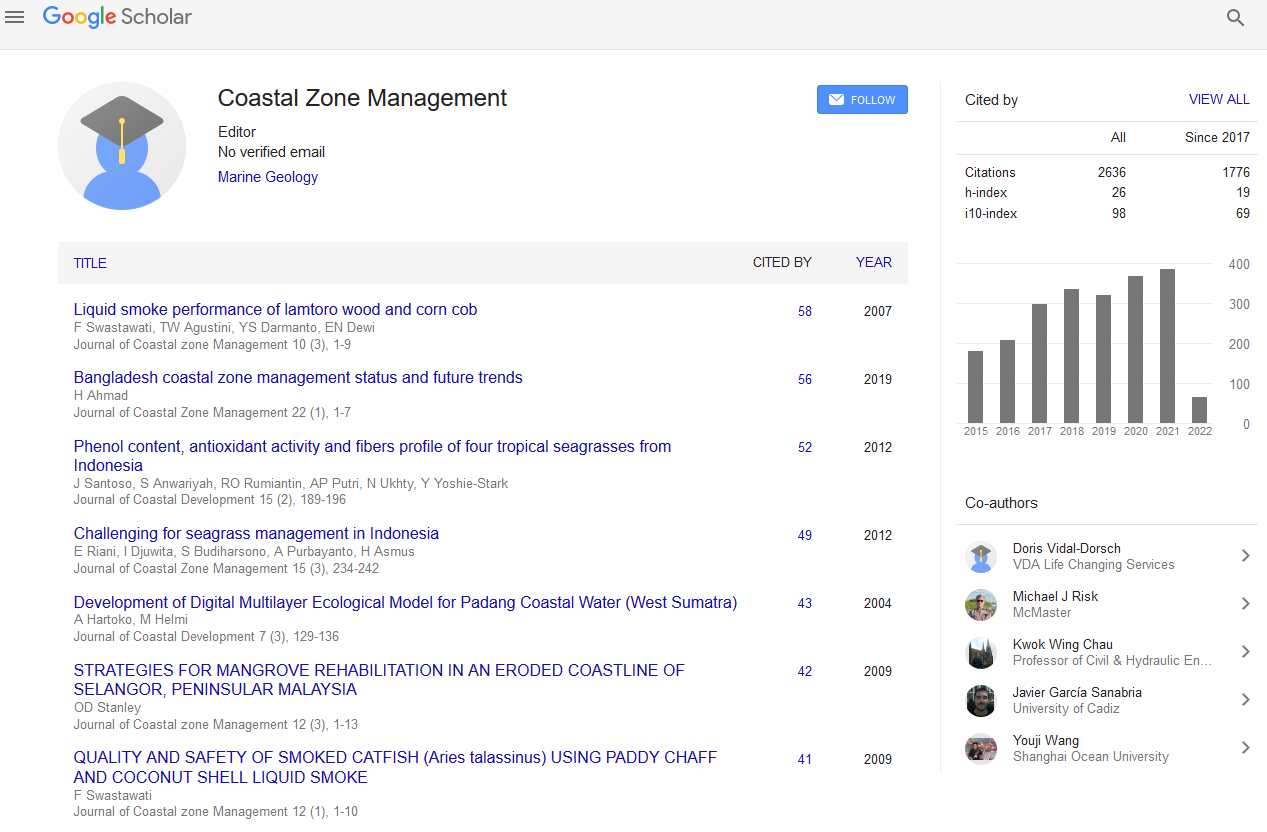Indexed In
- SafetyLit
- RefSeek
- Hamdard University
- EBSCO A-Z
- OCLC- WorldCat
- Publons
Useful Links
Share This Page
Journal Flyer

Open Access Journals
- Agri and Aquaculture
- Biochemistry
- Bioinformatics & Systems Biology
- Business & Management
- Chemistry
- Clinical Sciences
- Engineering
- Food & Nutrition
- General Science
- Genetics & Molecular Biology
- Immunology & Microbiology
- Medical Sciences
- Neuroscience & Psychology
- Nursing & Health Care
- Pharmaceutical Sciences
Abstract
Biodiversity of Benthic Diatom and Primary Productivity of Benthic Micro-Flora in Mangrove Forests on Central Java
Ign. Boedi Hendrarto and Mustofa Nitisuparjo
A study to determine biodiversity related to ecological function of secondary mangrove forests at central Java had been carried out in three different locations viz. Rembang, Demak and Pemalang coasts. Location of sampling was selected systematically in three levels of inundation within both lower and higher densities of mangrove. Sediment samples were collected randomly with four replications. A lens tissue trapping method was applied to collect living benthic diatoms. Primary productivity was measured in-situ in the locations as production of carbon per unit area per unit time. It was determined by dissolved oxygen content measured by the bell jar method. Data were then analyzed using biodiversity index (Shannon-Wiener index), ANOVA, regression and cluster multivariate analysis for biodiversity. Totally, 86 benthic diatom species had been found and the benthic diatom community assemblage was dominated by Amphora coffeaeformis, Diploneis crabro, Diploneis smithi, Navicula elliptica, Pleurosigma sp., Stauropsis majuscula and Surirella gemma. Benthic diatom abundance was 8.6750 x 104 to 18.9626 x 104 cell/m2, where the highest was found in Demak and the lowest was in Pemalang. Abundance of the diatom does not always have significant relation (P > 0.05) to both inundation levels and mangrove density; however, this was more depended on location. The assemblage of benthic diatom community was more similar in Rembang and Pemalang compared to that in Demak, however the biodiversity index tended to be higher in the lower mangrove density. The benthic micro-flora primary productivity was 120 to 342 mg C/m2/hour and had no significant relation (P > 0.05) to abundance of benthic diatom. It was revealed that the optimum density of mangrove to have the highest benthic micro-flora primary productivity was between 8000 to 10000 trees/ha.

